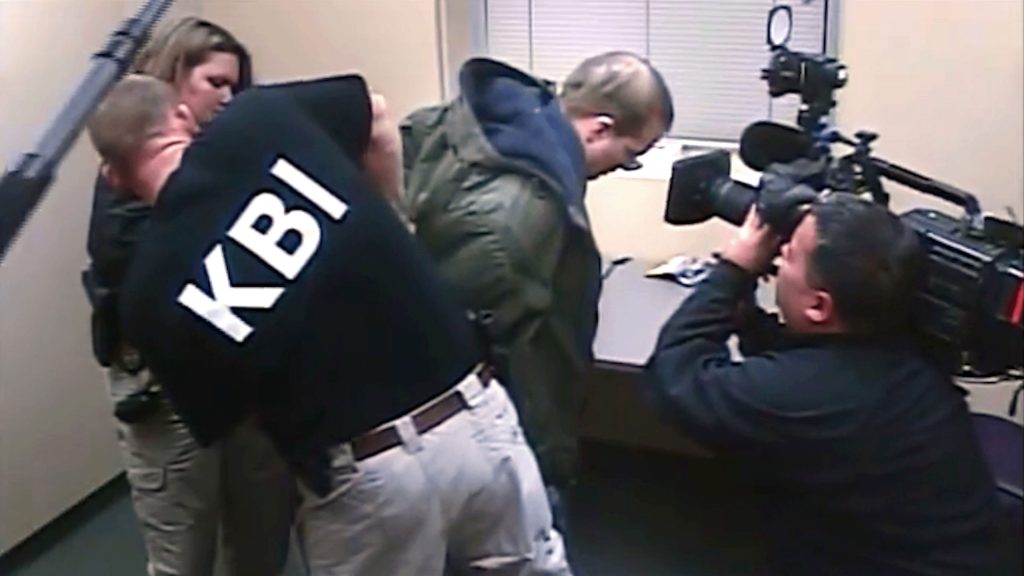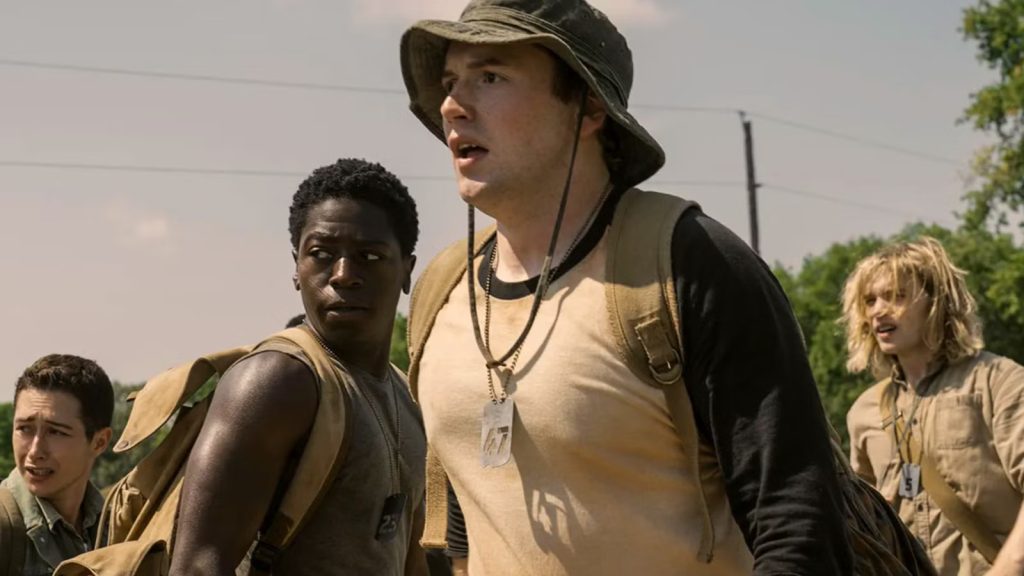Let us pause, for just a brief moment, to praise the pleasures of the theatrical concert movie— the experience of watching a musical performance, on a giant screen with good sound, amongst the same kind of group of strangers you’d enjoy it with if you were in the audience onscreen. There have frankly been too few of these films in recent years (beyond the Stop Making Sense restoration and re-release, the Taylor Swift and Beyoncé movies, and a handful of softball bio-concert-docs), as most new concert movies go directly to the streamers. And indeed, Thom Zimny’s new Road Diary: Bruce Springsteen and the E Street Band completes the Boss’s tour of the streaming services, following 2018’s Springsteen on Broadway (Netflix), 2019’s Western Stars (Max, after a brief theatrical run), and 2020’s Bruce Springsteen’s Letter to You (Apple TV+).
Road Diary is a Hulu original, so 99% of its viewers will watch it at home; I was lucky enough to see it in a large venue at the Toronto International Film Festival, and to enjoy its energetic, electrifying concert performance footage and ace sound (deep, layered, like you’re in the crowd, rather than the too-clean soundboard recordings of too many concert movies). But it will also play nicely on the home screen, where viewers can still key on on the show’s real moments of emotion, spontaneous and otherwise.
It’s basically a procedural, documenting the making and execution of the band’s 2023 world tour—their first in six years, thanks to that pesky global pandemic, which followed a scheduled (but briefer) hiatus. “That’s a lot longer break than I planned,” Springsteen says, as he walks us through the steps of getting the show up on its feet. First there are rehearsals, in a black box theater in Red Bank, New Jersey, where he accomplishes two key goals: first, “You’ve got to shake the cobwebs off your band,” and second, he has to put together a set list that will tell the story he wants to tell, one that “will let the audience know who I am, at this point in my work life.” For the three-hour show, he has to select 28 songs, culled from a fifty-plus year career (including three albums they’ve never played live), striking the right balance between the hits and the most meaningful of his new songs.
If that sounds dull to you, a rock music fan, Road Diary might not be your brand of vodka. If, on the other hand, it sounds like the kind of micro-focused, logistics-laden documentary that you love, you’re in for a treat. Zimny’s primary interest here is in the various moving parts of putting “a real rock show’ together, which is not magic or showmanship but hard damn work; he wants to explore the emotional, intellectual, and physical labor of being a musician, within a group where some of these guys have been playing together for literally half a century.

This is not a Springsteen bio-doc; it is, wisely, about the band, their dynamics, and their process. Sure, we get some great old video footage and war stories from the road (“In the early days” is an oft-used refrain). But he’s more set on digging out what made them so special, so unique to that time and place, and how their current iteration finds itself chasing the ghosts of their old shows, and their old selves. There is history in every city (a bandmate recalls them hitting a venue where Bruce opened for Chicago and “got booed off the stage”); there is a void onstage where the late band members Clarence Clemons and Danny Federici once stood.
Beyond all of that, Zimny captures and catalogs the nuts and bolts of putting up a rock show, of creating that experience of, in one back-up singer’s words, a “train that has no brakes.” Springsteen lays out how it’s assembled, and how they tweak it on the road; “something changes in a song when you play it in front of a live audience,” he explains. We see him after the shows, and he looks tired—understandably. But he also looks satisfied, which is heartwarming.
Zimny has directed several of Springsteen’s previous documentary projects, as well as such authorized bio-docs as Sly and The Beach Boys. His proximity to his subjects often feels compromising, like rough edges and tough patches have been sanded off and erased, and while Springsteen is not the official co-director here (as he was on Western Skies), he’s credited as producer and writer, penning his narration, as opposed to spouting it in interviews. Some of the visual strategies for the concert footage get monotonous (there are so many slow zooms), and the presentation is a tad disorganized; it feels as though the director couldn’t decide between using the set list and the movements of the tour as the organizing structure, so he kinda half-heartedly does both, for alternating stretches.
But fans—of Springsteen, and of rock music in general—will find much to chew on in Road Diary, particularly in its more thoughtful stretches. There’s something truly poignant in his explanation of how everything he does now is imbued with a sense of mortality, and, as he puts it, “an expanding vision of life itself.” That’s grand talk, but appropriate to the art and tradition he attempts to honor, of going on stage and “playing for all the stakes rock and roll has to offer.” As he says, “After 50 years on the road, it’s too late to stop now… It’s my job.”
B
“Road Diary: Bruce Springsteen and the E Street Band” streams Friday on Hulu.



